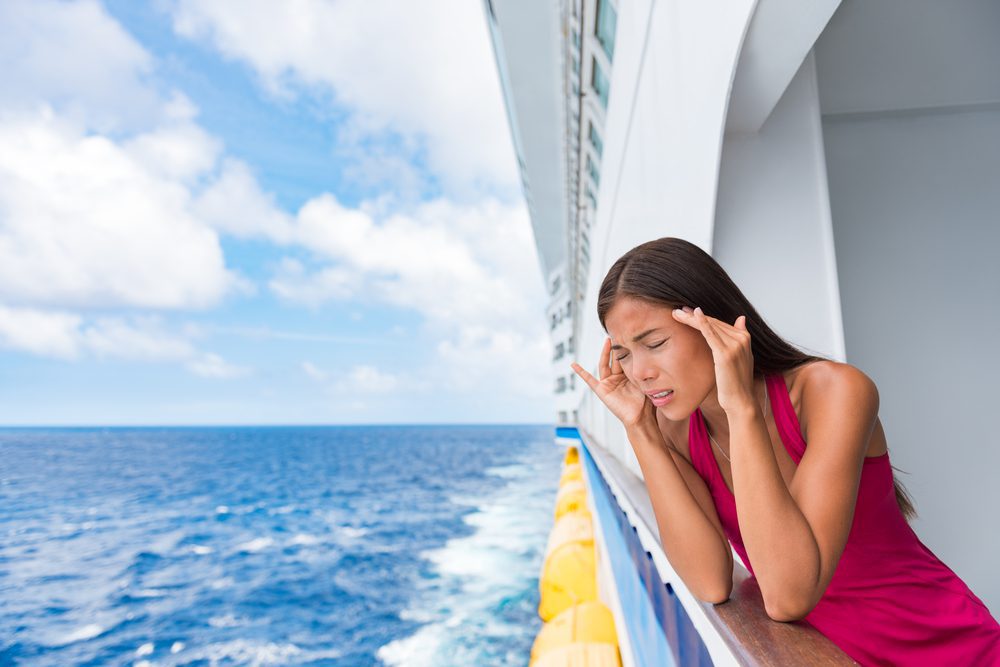Blog
How To Beat Seasickness
Beating Seasickness
Seasickness can be absolutely debilitating, especially for those who love boating. The swell of the waves can trigger seasickness, for some people, even on calmer days.
But what causes sea sickness?
Seasickness is a form of motion sickness. Motion sickness can occur in cars, on planes, and boats, and on rides and roller coasters. Motion sickness can even be caused by visual stimuli, such as certain video games. Basically what’s happening is your central nervous system and inner ear – which is also called the labyrinth and is responsible for balance, lose track of where the vertical plane is, causing a disruption to equilibrium and sense of balance. For boaters, this is caused by the swell of the sea.
Seasickness is much worse than all other forms of motion sickness, as it’s the only form of motion sickness that can last for days at a time. If you’re in a car, you can pull over. If you’re on a plane, the motion sickness will usually clear up after the turbulence stops. Seasickness can continue on as long as you’re on the water, with some experienced sailors, taking up to 3 days to recover. Some people are lucky enough to become acclimatised to it and naturally overcome seasickness if they have a career on the water. However if you’re a recreational boater, or preparing for your first cruise, you may not be so lucky.
Seasickness isn’t just the overwhelming feeling of stomach sickness, its symptoms are usually progressive.
Seasickness often begins with yawning and fatigue, dizziness and headaches, and progresses into nausea and vomiting. If you ignore the early warning signs, you’re much more likely to fall victim to the full extent of sea sickness, whereas you if notice yourself yawning more than usual and acknowledge it, you may be able to take control early and beat some of the symptoms that can occur later.
The following tips we’re going to discuss are a mixture of scientifically tested methods, tried and trusted by experienced sailors, and some old wives’ tales. Some of the following tips may prove useful on land as well, if you or a family member suffer from motion sickness.

How do I beat Seasickness?
- The first tip is to trick yourself into believing you don’t feel seasick. Sounds simple right? Well the majority of seasickness is mental, not physical. Telling yourself you don’t feel seasick can actually help you stop feeling seasick.
- My favourite tip, is to look at the horizon! This is something my mum told me every time we’d go on a long drive as a kid. I’d spend hours staring at that horizon and it really helped! This is because it resets your internal equilibrium. Especially when at sea, everything around you is moving, except for the horizon. Focusing on the stillness of that will help you regain your sense of balance.
- Get some fresh air! Strange or unpleasant odours are common on fishing boats in particular and can really make you feel ill. Breathing in fresh air will help you feel less nauseous.
- Eat consciously! Some people believe that eating a big greasy meal before boarding will help keep the stomach at ease. For me, this is not the case at all. Eating greasy foods high in saturated fats, or very sugary meals, really increase the feeling of motion sickness. The best way to prevent it, and reduce its symptoms is to stick to healthy and bland foods that won’t swirl around in your stomach or cause light-headedness.
- Chew some gum! The repetitive motion of chewing can help ease the nauseousness and light-headedness. In Asia, ginger is commonly used to help prevent nausea and vomiting. Combine the two and chew some ginger gum!
- Don’t Drink Alcohol! If alcohol can cause motion sickness on land, imagine what it can do at sea!
- Close your eyes and breathe. Seasickness can be caused by your senses becoming overwhelmed. By closing your eyes and concentrating on your breathing, you’re shutting off some of your senses to outside stimuli, allowing your equilibrium to settle.
- String up a hammock. While this isn’t always possible on small, recreational boats, lying in a hammock can help reduce a lot of the motion.
- Get in the water! Again, not possible at all times, but if you know it’s safe to swim, and follow all the necessary precautions, jumping in the water can really help reduce the motion.
- Stay in the middle of the boat. The central point will be more still than the bow or the stern.
- Lie down. It is said that lying down on your back can prevent histamine from reaching your brain and therefore can reduce nausea.
- Decongest and clean your ears. Cleaning your ears with a cotton bud can prevent wax build up which can throw out your balance. Blowing your nose or using a vapour rub to clear it can also prevent extra pressure on your middle ear.
- Take medication! There are plenty of options over the counter specifically for seasickness. Discuss which is right for you with your pharmacist. If these prove ineffective, you can get prescriptions for stronger medications. If you don’t have any travel sickness specific medication available, common antihistamines can help.
- Try different foods and essential oils! I’m a big believer in natural remedies. There are hundreds of foods and smells that are said to reduce nausea. I find eating dry crackers really helps settle my stomach. Peppermint or spearmint essential oils are great too. I briefly mentioned it before but as a food, a gum, and essential oil, ginger for me is number 1. There’s conflicting scientific evidence supporting ginger’s anti nausea and vomit reducing abilities, but for me it really works!


